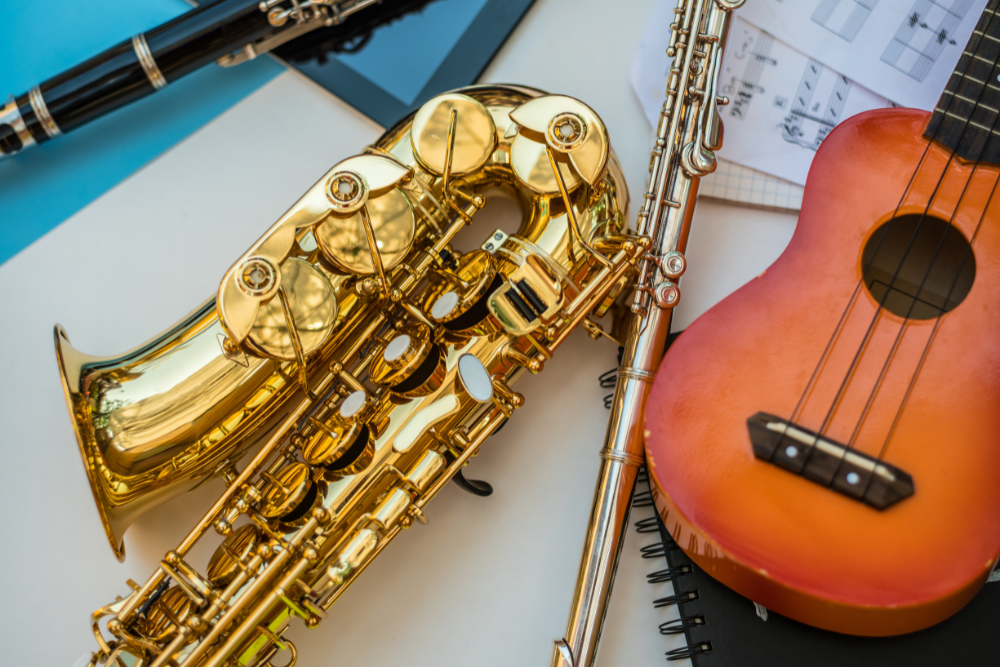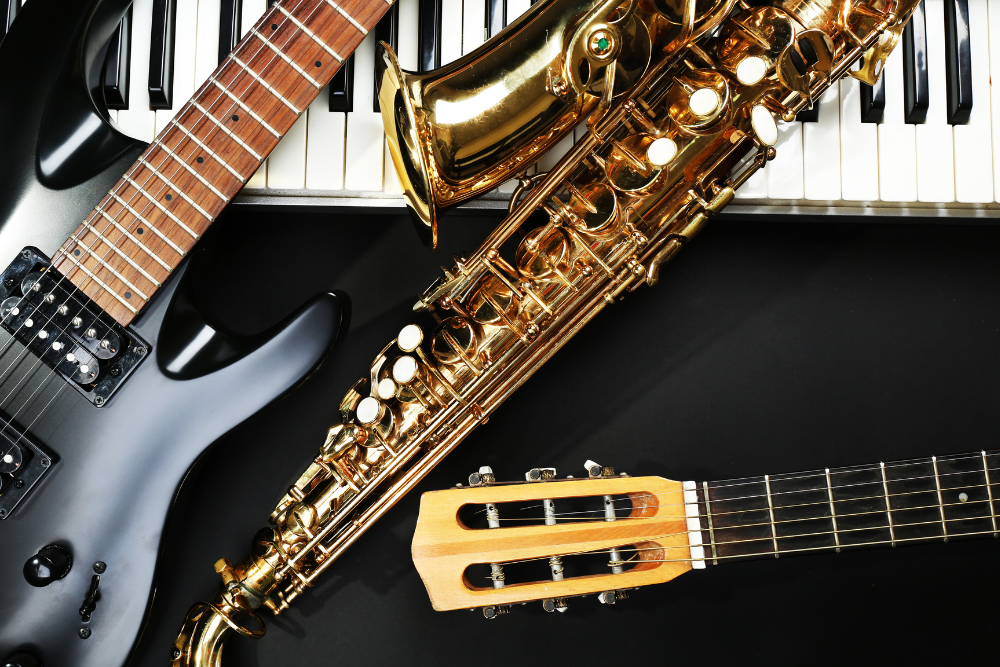WORDS: Monica Rouvellas, Founder of Muzikboxx, Music Teacher and Musician
Some instruments aren’t suitable for children before a certain age like the flute which is ideally started at age 7-8. Some instruments may take up a lot of space and are difficult to transport like the harp. All instruments require a baseline of interest and concentration for children to learn and stick with as their interest waxes and wanes.
The key consideration is ensuring that there’s a “love match” between child and instrument to keep them hooked for life and keep them learning even as competing priorities get in the way. Parents should never force their own preferences or personal agenda on their child. It’s always best to let your child discover for themselves what instrument they want to play.
We know that playing an instrument has many benefits for children. Studies show that it helps improve focus, enhances academic and social skills, and is a great source of relaxation and self- expression. Research highlights the link between music and language fluency and the way in which it positively affects brain function. But to reap the benefits of music, children first must be paired with the right instrument.
Here are some tips.
Pay attention to what your child likes
Does your child enjoy high, medium, or low sounds? You can find out by getting your child to listen to music that features different instruments. For example, play them a violin concerto like Vivaldi’s Four Seasons or a Brahms oboe concerto to see what sounds they like the most. Choose iconic pieces of music that showcase the range and style of the instrument. For cello this might be Elgar’s Cello Concerto in E Minor, for trumpet it could be Cantaloupe Island by Herbie Hancock.
Would your child like an instrument to accompany their singing? This preference will influence the type of instrument your child might choose. Keep in mind that certain categories of instruments lend themselves to particular styles of music. In seeking the perfect instrument for your child, you have the perfect opportunity to explore different genres of music and expand your horizons together.
Find opportunities to try the instruments out
State orchestras such as the Sydney Symphony Orchestras and even youth orchestras do toddler proms where young children can listen to different instruments and even try them out.
Music shops are another great option and often have knowledgeable staff who would be willing to show young musicians their options. It’s best to try out as many instruments as possible. You may find your child will go back to one particular instrument over and over again. This is a sign the instrument might be a good fit for them.
Other things to consider
- The physicality of the instrument is a major factor that limits what instruments young musicians can play.
Though some instruments do require the student to be older to play them, instruments like the piano, violin and cello can be taught from as young as three due to the availability of smaller size instruments for those particular ages. The other advantage of these three instruments is that they establish an excellent theoretical foundation in music should your child be moved to learn more instruments later on.
- On this note, bigger instruments require more space including when transporting and playing the instrument.
Some kids don’t like to carry big instruments around at school. When it comes to practice space, do you have room to fit a piano in your home and will neighbours – particularly if you live in apartments or units and play louder instruments – complain about the noise?
- Then there’s the issue of performance opportunities.
Students are often more motivated when they have the chance to perform whether as a soloist or with others in an ensemble. Practicing for a performance should be factored in the time commitment required when choosing an instrument.
- Finally, the cost of a good instrument is another consideration since instruments don’t come cheap.
For most instruments the sound is directly related to the price you pay – for example the most inexpensive violins will cost between $200-$500 but an upgrade will jump up to the $600-$1000 price range. A second hand bargain might be the most budget friendly option but parents should arm themselves with information to avoid buying a dud.
Monica Rouvellas is the founder of Muzikboxx, an all-in-one platform for music teachers and music students, made by music teachers. Muzikboxx is a music education platform that is designed to help music teachers and students connect and collaborate more effectively.
For more information:
Follow KIDDO on Instagram and Facebook, and subscribe to our weekly newsletter







